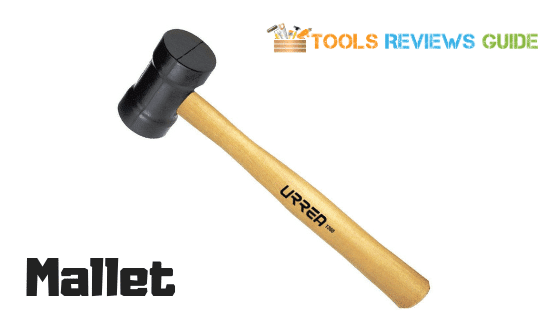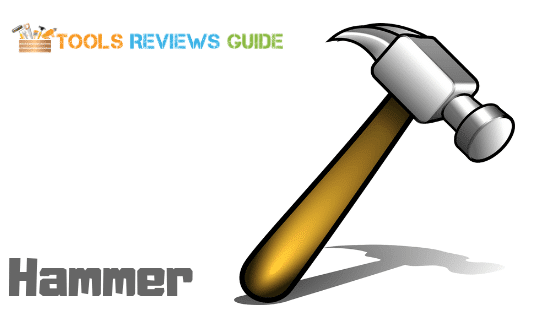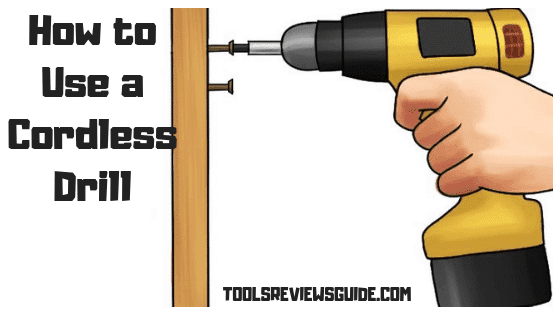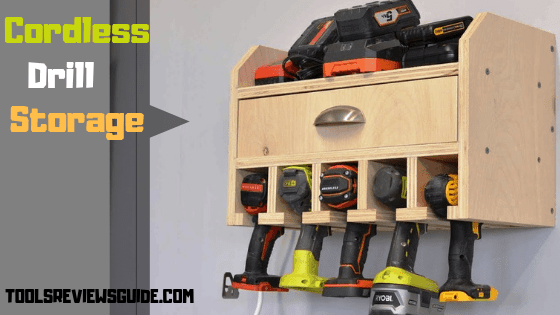Last Updated on January 31, 2023 by John Patterson
The difference between a Hammer and a Mallet is quite a confusing topic.
I understand that.
Someone can easily get confused about the differences in terms of use between these two tools.
Buckle your seat belt because I am here to solve that puzzle.
They are different.
Yes, you heard it right. They are different in terms of shape and purpose of use. I will describe what they are, their use, and some upsides and downsides of both.
Later, I will guide you on which one is better for what purpose.
So, let’s take a closer look.
Table of Contents
Mallet vs. Hammer: The Key Differences Explained
What is a Mallet?
A mallet looks almost like a hammer. Someone who doesn’t know mallet exists in this world would be unable to differentiate between these two.
Mallets have the same number of parts – handle and head. However, structurally, the head’s shape and material are the core differences here with a hammer.
The handle of a mallet is mainly made from wood.
On the other hand, the head is made from rubber, copper, plastic, rawhide, or wood.
You won’t find any claw, neck, etc., like most of the hammers, do have. To be exact, the head is big and round-shaped in the case of a mallet and has a flat surface at both ends of the head.
Wedges, glue, or other hardware attach the head and the handle.
You can use both ends equally for the same purpose.
You will want to use a mallet when you want to put a soft impact and don’t want to leave a mark.
Leveling the dent of metal is one popular use of a mallet. However, it is not limited to that only.
Woodworkers love to drive the chisel with a rubber/wood mallet.
Why?
Because they can control the cut properly using a mallet, and it doesn’t damage the chisel head like its hammer counterpart.
You can use a mallet for various other tasks too.
Like if you want to break a piece of wood or wooden material like a cricket bat or baseball bat, or if you want to put together things to make furniture, then a mallet is the best choice for you.
Recommended Best Mallets on Amazon:
[amazon box=”B00KX4KB5M, B00MWVAUUA, B002LVUWQ8″]Let’s get to know some of the upsides and downsides of a mallet.
Mallet
Pros
- Doesn’t cost too much.
- You can make a wooden mallet on your own.
- Used for different purposes where you want to apply mild/soft force but better result without any scratch or mark.
- You can use both ends of the head equally to achieve the same result.
- Usually not too heavy.
Cons
- Mallet tends to bounce back after you hit the object. Use protective gear to keep you safe from injuries.
What is a Hammer?
Structure-wise, a hammer is not the same as a mallet.
Typically you will find one end of the hammerhead is like a flat shape and a peen/claw or ball at the other end.
The flat surface end is used to hit the object.
You usually use a hammer to strike hard. Hence the material of the head needs to be strong. In most cases, steel is used to make the head of a hammer.
What about the handle?
The shape of the handle of a hammer is different than the shape of a mallet.
This time you will find a slender handle, probably with a grip to control the hammer properly.
The length of the handle does matter.
As I said, you want to use a hammer to hit hard. So, a longer handle is going to help you in this regard.
What’s the equation?
The longer the handle, the greater the amount of force it will be able to produce. You know, the farther it drops, the hard it hits.
You will find a wide variety of hammers on the market. Let’s deal with common hammers we use for DIY tasks or gardening.
- Claw Hammer: I’ve already discussed the shape of this type of hammer. These are the most common ones. It’s called a claw hammer since one end of the head is like a claw. We use this hammer for various purposes, including knocking the nails in with the flat surface and taking it off using the claw end of that hammer if it is not required.
- Break Hammer: This type of hammer is to break the brick mostly.
- Ball Peen Hammer: Here, you will see a flat surface at one end and the ball along the other end. This type of hammer is used for hammering and shaping soft metals.
- Warrington hammer/panel pin hammer: This one is used for hammering real small and thin pin-like nails.
- Dead blow hammer: This one doesn’t bounce back after hitting. Used for almost the same purposes as the mallets, but here you will be able to hit with greater force than you do with a mallet.
Recommended Best Hammers on Amazon:
[amazon box=”B00433SC4Q, B074D4TDVM, B0000224VG”]Let’s deal with some pros and cons of a hammer.
Hammer
Pros
- Provides you a greater force than a mallet.
- Different variations are available to serve different purposes.
- Easily available.
Cons
- Some hammers are a bit heavy to handle.
- Except for the dead blow hammer, the other bounce back after hitting the object. So use protective gear to avoid any possible injuries.
Hammer and a Mallet – Which One is the Better?
You better decide which one is perfect for you.
I can’t guess what you are looking to do with the tool.
You know the different types and use of these tools. It won’t be a tough task to judge the better option for you anymore.
Final Words
I hope I could wipe out all the confusion between a hammer and a mallet.
So, a hammer and a mallet should no longer remain a moot point to you.
The last two points that I believe are worth noting are. Please wear protective gear like gloves and glasses when working with these tools.
You must use a quality product to get the best result.
Comment below if you have any more confusion or question to ask.
Related Reading:
#1. Dead Blow Hammer and Rubber Mallet Difference






